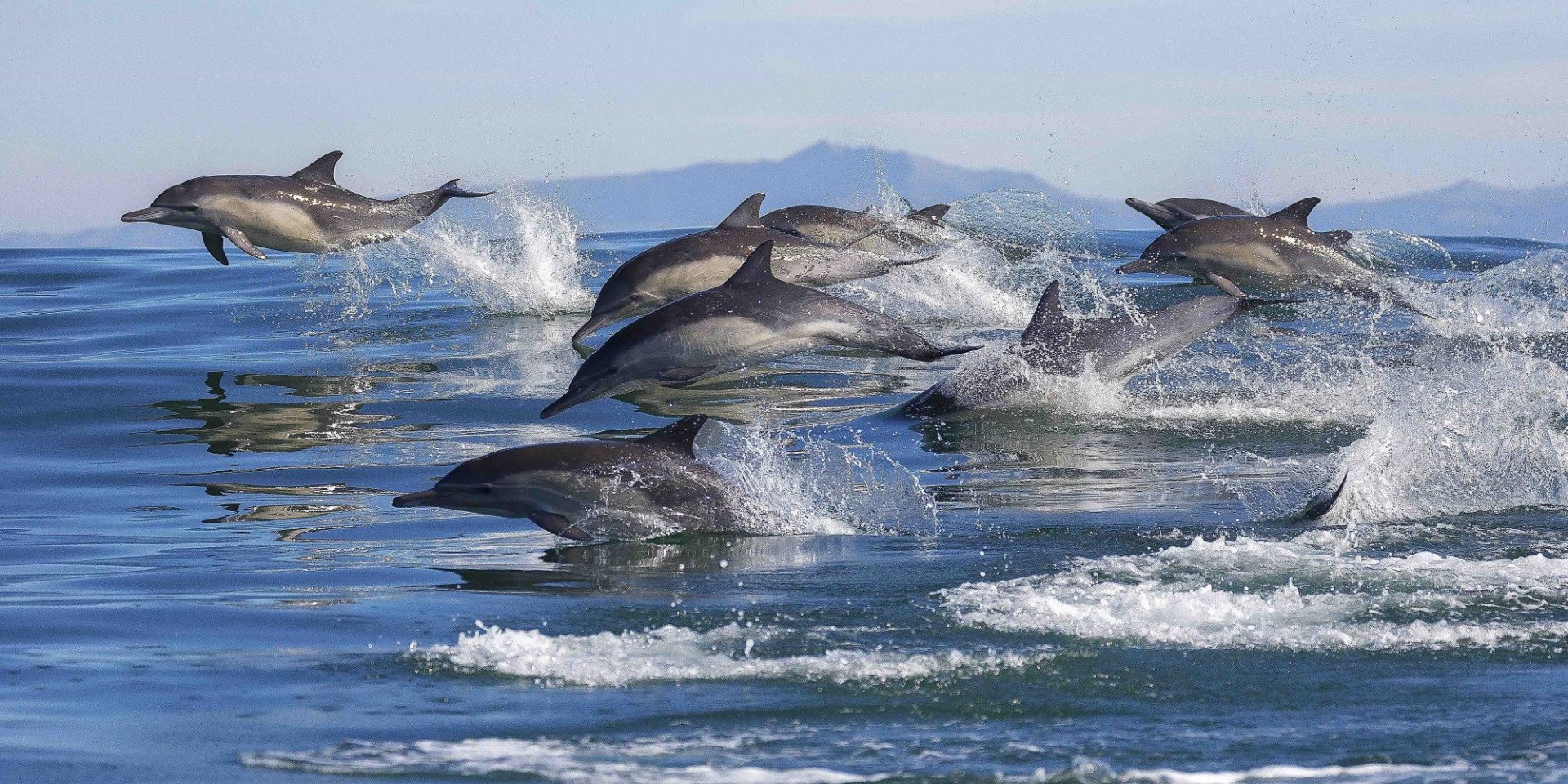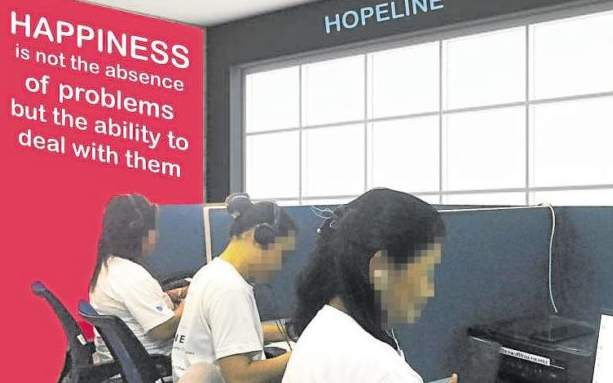Jean Goulbourn: Hope and Healing
Nothing could be worse to a parent than losing a child to suicide due to depression.
“The tragedy of losing a child to suicide is not the same grief that one feels when losing a child to an illness. It makes you feel rejected. You feel you’ve been a failure as a mother. You feel abandoned. You feel unloved,” says Jean Goulbourn, renowned Filipina fashion designer, after losing her daughter Natasha, who was in her 20s.
Natasha sought therapy from an Australian psychiatrist, who diagnosed her with mild depression and prescribed a cocktail of pills. She passed away in Hong Kong on May 25, 2002.
“I did not suspect my daughter had depression,” says the grief-stricken mother who had prayed hard for a sign that Natasha was happy. She sent dolphins to tell her mom she was okay.
Dolphins gleefully hurling and turning in the air, or gracefully gliding next to a boat, is a sight to behold. They bring instant delight to spectators. But to Jean dolphins did not only bring joy. They were messengers of hope and healing from her late daughter Natasha.
Dolphins symbolise protection, often appearing in mythical tales about saving humans in distress. They are also considered to be ferriers of the dead that guide souls to reach a peaceful afterlife. Their sudden appearance was nothing short of a miracle to Jean.
An animal lover, Natasha had a fascination for dolphins, which she believed are beautiful, gentle, sensitive, intelligent and healing creatures. In a memoriam entitled Dance of the Dolphins: Natasha’s Story, her older sister Katrina Goulbourn-Feist narrated:
“A couple of weeks after Natasha passed away, in the midst of their pain, family and close friends returned to a charming and peaceful beach resort that they had been to with Natasha, seeking answers to soothe their broken hearts and in much need of rest.
On the bangka (boat) ride heading home across the narrow channel, each person was deep in thought, soothed by the sound of the boat’s motor and the rhythm of the waves. Her mother, Jean, was praying, asking Natasha for some kind of sign from her that she was all right.
As if from nowhere, a large pod of dolphins appeared, jumping in and out of the waves, dancing and playing alongside the bangka for minutes that seemed to last forever […]
It was a magical moment in which the family felt Natasha’s strong presence with them. Perhaps she was giving hope and reassurance, a beginning towards healing.”
(Image: Tourism Bay of Plenty, NZ)
Jean vividly recalls that dolphin moment: “Before boarding the boat I went back to the cottage, knelt on the white pebbles and cried out loud: ‘God, you must show me the dolphins. She said we can heal with the dolphins, swim with them, hug them and their gentleness and vibrations can heal us. But let me see them if you exist! Tell me You can hear me, God. Tasha, negotiate with God come and bring me the dolphins.’ Being a Catholic, taught about sin and hell from a very young age, I prayed: ‘Five dolphins means she is in hell, 10 means she is in heaven with You! I will surrender her to You but I must know if she is happy and tell me, is she with You?’
I was about to give up as we were headed to Batangas port, on the 2 p.m. course, just 20 minutes away and no dolphin sightings. “Wait!” the captain shouted. “At 11 o’clock position, three dolphins sighted!” Oh, how my heart palpitated, oh no, I will take the penalty of hell, but not my child!
Suddenly we saw 10 dolphins and, oh, more, more and more! One hundred eight dolphins in all, in five rows dancing, performing better than the shows in Sea World. We were all crying, I knelt to say, “Thank you, thank you for comforting us all.” Eight minutes of leaping, smiling, beautiful dolphins, what a sight! […]
And as they did a goodbye flip with their tails, eight pairs of dolphins went to the front of the bangka and escorted us back to our two o’clock course towards the port […] Eight minutes and eight is my favorite number.”
At that moment Jean knew her daughter’s message – heal and save lives. Thanks to the dolphins, the idea of establishing the Natasha Goulbourn Foundation (later renamed NGF Mindstrong) crystallised.
“The dolphins spelled out my commitment to a mission,” says Jean. The foundation’s dolphin logo was intentional. It embodies hope and healing, bringing depression to light.
Since Jean founded the non-profit NGF Mindstrong in 2007, she has devoted her life to mental health awareness and suicide prevention in the Philippines. The foundation serves as a hub whose primary goal is information awareness on depression and how one can prevent, recognise or treat this mental illness. It initiates a series of local and international lectures and forums, a confidential 24/7 crisis “Hopeline” (hotline), and partnerships with mental health professionals to educate people on depression – what it’s about and how, at its worse, can lead to suicide.
“Nobody really knew about depression and how it could turn to suicide when we started the foundation. It was then a taboo,” Jean says.
NGF Mindstrong is the Philippines’ country representative to International Association for Suicide Prevention (IASP), the mental health partner of WHO. In its efforts to launch a nationwide campaign of mental fitness and health NGF Mindstrong has partnered with the Department of Health, Department of Education and Department of Social Welfare and Development along with top schools such as University of the Philippines, Ateneo de Manila University and Miriam College. It is currently working on partnering with other universities, local government, civic organisations and psychology clinics to further its mission.
In the Philippines, an estimated 15.4 million Filipinos suffer from depression, one million from schizophrenia, and 15.3 million from substance use disorders, while 877,000 die due to suicide every year. (Department of Health, 2018)
NGF Mindstrong Hopeline Respondents (Image: inquirer.net)
More than just a bout of the blues, depression isn't a weakness and you can't simply snap out of it. Many struggle, too afraid or too ashamed to ask for help, that it goes undiagnosed as a consequence.
Depression is a common mental disorder that is characterised by sadness, loss of interest in pleasure, feelings of guilt or low self-worth, disturbed sleep or appetite, low energy and poor concentration among other symptoms.
The depression-related issues can become chronic or recurrent, substantially impairing an individual’s ability to cope with daily life. At its most severe manifestation, depression can lead to suicide. When persistent symptoms are ignored, depression can lead to suicide.
Natasha seemed normal, high functioning, even took part in conversations. Jean recalls Natasha casually reminding family members and household staff to make sure her mom eats well and only organic food, keeps her regular beauty salon and massage appointments. She also told her mom to take care of her pet Zoe, a cocker spaniel.
After immersing herself studying and researching the complexities of mental health, Jean often wondered: “Were these her signs of goodbye?”
NGF’s resilience programs now part of public school curriculum
On June 20, 2018, the Mental Health Act RA No. 1136 was signed into law. “An Act Establishing a National Mental Health Policy for the Purpose of Enhancing the Delivery of Integrated Mental Health Services, Promoting and Protecting the Rights of Persons Utilizing Psychiatric, Neurologic and Psychosocial Health Services, Appropriating Funds Therefore, and for other Purposes”.
Now on its 15th year, NGF Mindstrong’s campaigns are aimed at parents and youth to battle depression and prevent suicide.
The NGF Mindstrong Youth Movement aims to provide an avenue for collaboration, partnership, and formation of the present generation of Filipinos for their sound wellbeing.
In a three-day NGF Campus Caravan conducted in 2017 at Bicol University in Legazpi City with 12 doctors (two from the US) there were 7,000 participants that included teachers, students and parents. For three and a half years Bicol University achieved a “Zero Suicide” campus with an estimated 45,000 student population. NGF Mindstrong aims to spread its programs for more successful ‘Zero Suicide’ campuses.
Recently, NGF developed a resilience program for the Department of Education for children in Grades 4 – 12. A Memorandum of Agreement was signed in July 2021 and “Katatagan ng Kalooban” (Strength of Will) will now be part of the curriculum of public schools.
Jean says there’s still much work to be done, including securing more collaborative partners. The stigma of mental health and its “intangibility” is a challenge in raising funds to implement projects.
Knowing what depression is all about is already a big step in managing the disorder. There is an urgent need to empower individuals suffering from the illness with resources, professional help and organisational linkages that can open new doors and bring light in their journey of suffering and pain to that of positive self-discovery and well-being.
It’s time to openly talk about it and to stop the stigma and shame. It could save someone’s life.
Debbie | ws
Images: NGF Mindstrong | Phone: +63 2 8897 2217 | Email: ngfmindstrong@gmail.com | Video: Fighting Depression and Preventing Suicide | Tales From A Hotline Responder







